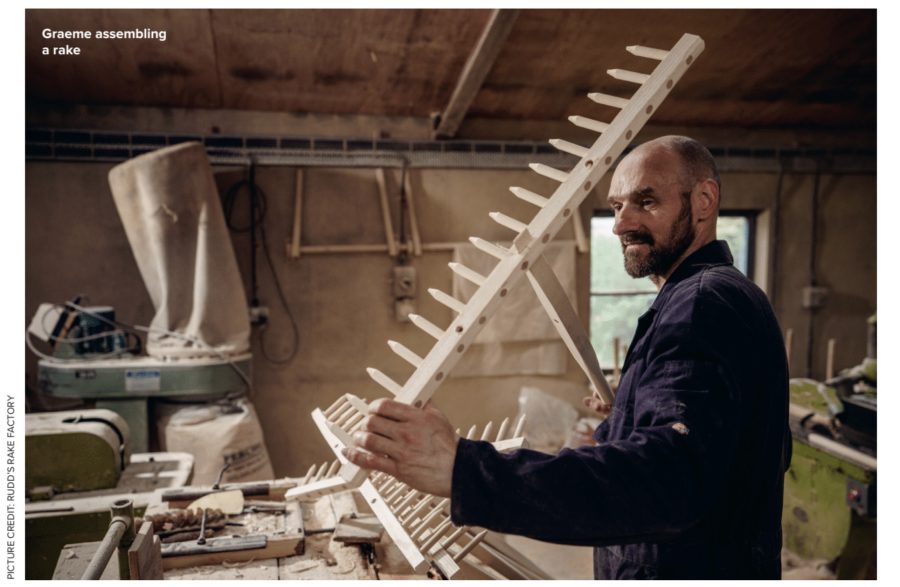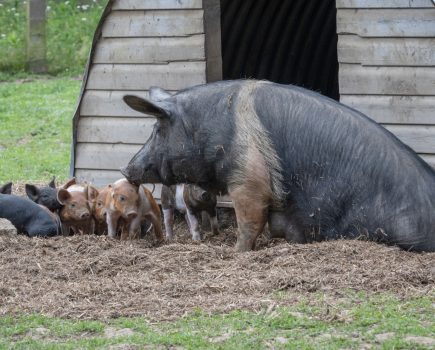Helen Babbs meets the rake, the bucket and the hurdle maker, carrying on the traditional ways of making some common smallholding kit.
Today, most smallholders pop down to their local Farmers’ Co-op or country superstore to get a new bucket or sheep hurdle. But for centuries, this kind of smallholding equipment was made “on the farm”, or by dedicated craftsmen in the local area.
While the ubiquity of mass production means most of us now won’t find a rake maker or a bucket-making cooper locally, these heritage crafts are still carried on by some dedicated craftspeople, preserving skills and and techniques perfected over generations.
MAKING A WOODEN RAKE
“I’ve been making wooden rakes almost all my life,” says Graeme Rudd, who runs Rudd’s Rake Factory in Dufton, Cumbria.
“It’s a family business, so I’d come here after school as a lad, and then I started work here at 16. It’s more like I fell into the job, rather than choosing to do it,” he chuckles, “but there’s a bit of pride when you see a finished rake.”
Quite unlike a modern spring-tine rake, a traditional hay rake has a straight head of teeth and a curved hoop or “bow” that braces the long shaft or handle squarely onto the head.
“Different places had slightly different styles,” Graeme notes. “Our local rakes have 16 teeth, but up in Kendal, they only had 12 teeth. Likewise, we use a bow of round wood, while other places had a flat strip of wood, or a split shaft like a Y-shaped spade handle.”
All the parts are wooden, even the teeth, which are made from hard-wearing birch dowel.
“We use ash wood for the rest, although we have used pine for the shafts in the past,” Graeme explains. This all arrives as logs, which are then sawn into battens of different lengths for the different parts.
“The battens for the bow go into the boiler, until they’re soft enough to bend into a curve,” Graeme describes, “while I plane and sand the shaft and the head to shape.”
A table-top machine nicknamed “The Demon Dentist” drills and inserts the peg teeth into the rake head, which are then sanded to points. Finally, the dried bow is threaded through a hole partway up the shaft, and the resulting “trident-like” handle fitted onto the rake head. Being entirely wooden apart from a couple of small nails holding the bow in the shaft, a traditional rake is a very sustainable product.
“If the teeth break, they can be replaced,” Graeme notes, “but generally they last for decades. They’re stronger than a metal rake, and much lighter to use. They can be oiled or painted, but the main thing is to make sure they get to dry out between uses and aren’t left outside to rot.”
This article extract was taken from the December 2024 edition of The Country Smallholder. To read the article in full, and meet the bucket maker and the hurdle maker, you can buy the issue here.
To receive regular copies of The Country Smallholder magazine featuring more articles like this, subscribe here.
For FREE updates from the world of smallholding, sign up for The Country Smallholder newsletter here.








